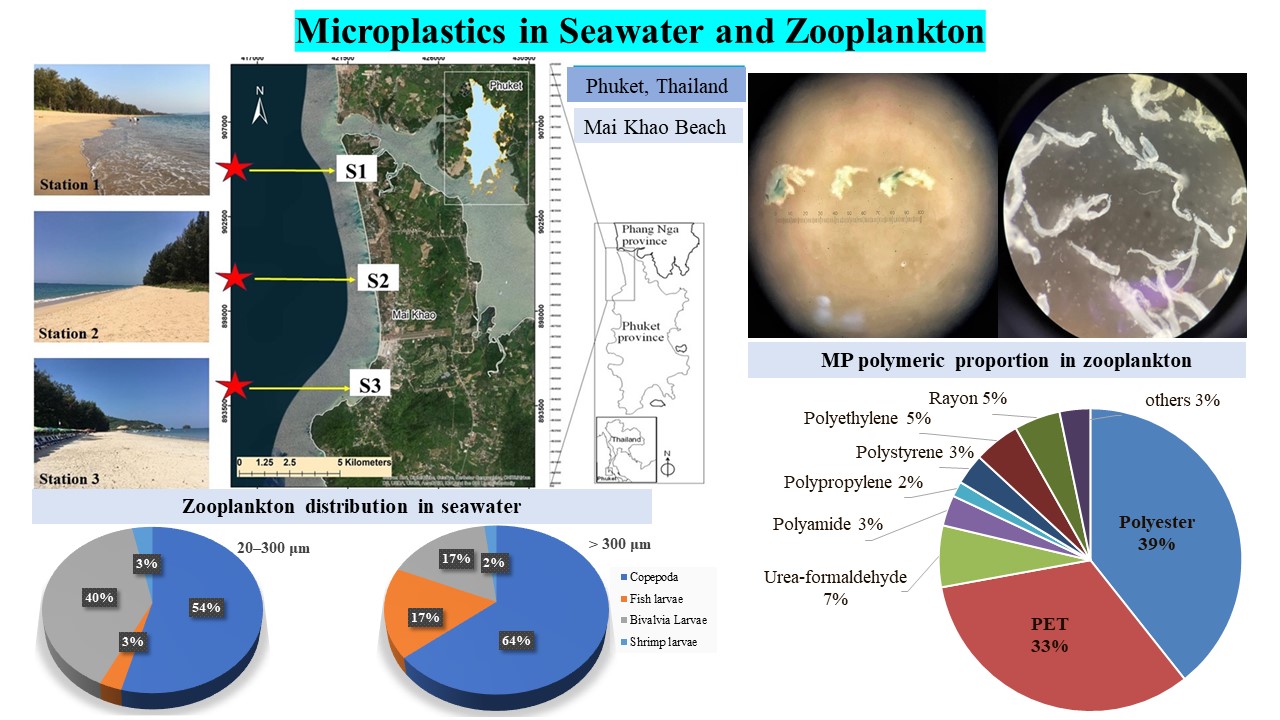Exploring Microplastics in Seawater and Zooplankton on the Eastern Coast of Thailand: A Case Study in Phuket Province
Main Article Content
Abstract
Microplastics can accumulate in the environment and be transferred to different trophic levels, making them a concern for the aquatic food chain. As far as the researcher is aware, this study is the first to analyze microplastics in seawater and zooplankton along the eastern coastline of Phuket, Thailand, emphasizing their ecological significance. Analysis of the seawater samples identified 256 microplastic particles, with an average concentration of 52.6±21.4 and 32.6±30.3 particles L-1 for 20–300 µm and >300 µm classes, respectively. Four zooplankton species—copepod, fish larvae, bivalvia larvae, and shrimp larvae—were chosen for examination. The findings indicated that microplastics can move to higher trophic levels, and their interaction with zooplankton resulted in 26 microplastic particles among the 120 zooplankton individuals observed. This yielded an average ingestion rate of 0.22±0.57 particles per individual zooplankton, with the highest rate observed among fish larvae. The micro-Fourier Transform Interferometer (µFT-IR) analysis verified the presence of polyethylene terephthalate (PET), polyethylene (PE), polyester, urea-formaldehyde (UF), and polyamide (PA). This underscores the prevalence of these polymers in daily and human-made plastic sources, emphasizing the need to implement effective measures to address micro-plastic pollution in ecologically vital areas to safeguard marine environments.
Article Details

This work is licensed under a Creative Commons Attribution-NonCommercial 4.0 International License.
Published articles are under the copyright of the Applied Environmental Research effective when the article is accepted for publication thus granting Applied Environmental Research all rights for the work so that both parties may be protected from the consequences of unauthorized use. Partially or totally publication of an article elsewhere is possible only after the consent from the editors.

